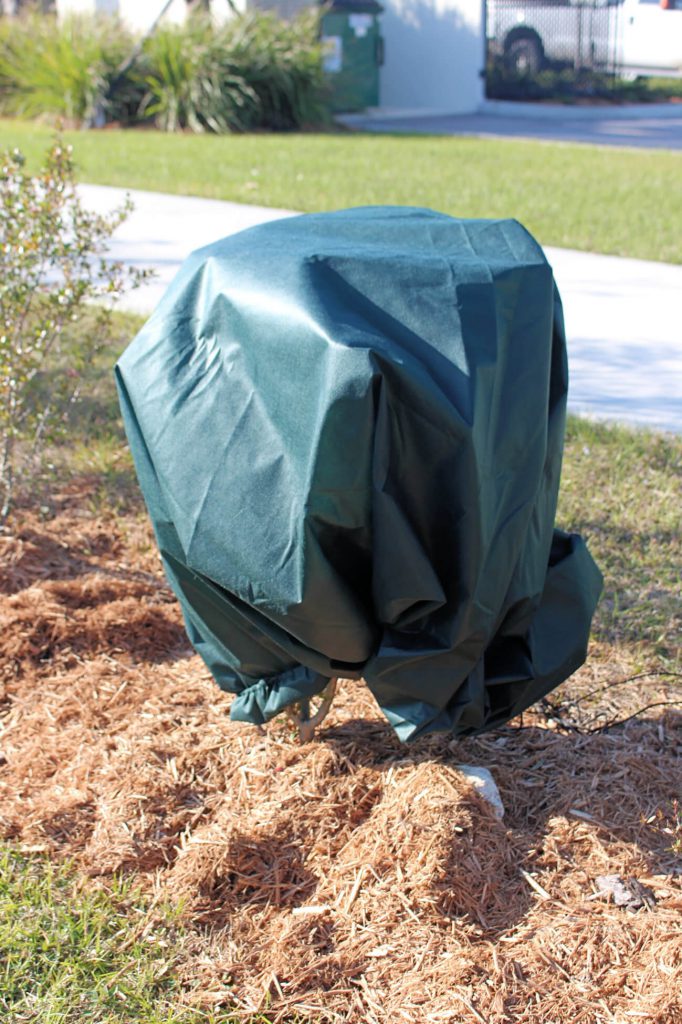By Ralph E. Mitchell

While we had some fairly cold mornings recently, we have not had a damaging frost/freeze in our area for a few years. Not to jinx this topic by bringing it up, but how do you deal with our yearly cold weather in the landscape? I would like to offer some suggestions on how to beat, work around or avoid cold and freeze damage to your landscape plants.
My first point will be to “plan before you plant”. Keep in mind that we are in certain plant hardiness zones which gives a sense of what plants can survive in our area. Conservatively, for the most part we are in zones 9b to 10a. The closer you are to the water, the more chances there are of finding a sliver of warmer temperatures. Warmer spots such as this are known as “micro-climates”. Micro-climates are places that are often warmer or more protected than the surrounding landscape. The shade provided by a tree can offer a reduction in cold injury by reducing the heat loss from the ground. However, plants that need full sun will of course not do well under these circumstances. Fences and buildings can also protect plants from frigid winds and some associated freeze injury. Hardiness zones are not completely exact and can vary a bit, but at least they give you an idea what plant is ideal for a spot, what plant is not going to make it and what plant may be marginal. Colder temperatures can almost always be expected in interior portions of our county.
Culturally, avoid fall pruning that may initiate a flush of new growth. This new growth will be tender and more susceptible to cold temperatures. Overall, healthy plants will better withstand cold temperatures. Pest management will assist with this as will proper fertilizer practices. When a frost or freeze warning is on, there are other methods of protection that can be completed. Any plant that is in a container can be moved indoors or temporarily gathered together outside, mulched to reduce heat loss from the containers and covered with a cloth sheet, quilt, or “frost cloth,”. For container or in-ground established plants, arrange the covering so that it extends to the ground and does not touch the foliage as best as you can. Leaves that touch the covering can be injured as heat is transferred from the foliage to the cold cover. While water is often used as freeze protection in nurseries and crops, it tends to be very impractical for the homeowner considering the timing required and water restriction issues.
After the freeze event, inspect the plants for damage, but don’t jump to remove any injured parts. Truly dead leaves can be removed when they turn brown. Don’t prune any woody parts out until you see new growth in the spring as you must allow time to be able to determine what is truly dead and what is still alive. Once damage has been determined, prune just below the dead portion – March is a good time for this.
Be prepared for the cold, but don’t get disappointed or disheartened! We have to face this weather each year and can deal with it with common sense and practical prevention. Otherwise, watch the local weather reports and have your supplies on hand. It will get warm again! For more information on all types of gardening topics, or to ask a question, please visit https://www.facebook.com/CharlotteMGLifeline/. Ralph E. Mitchell is the Director/Horticulture Agent for the UF/IFAS Charlotte County Extension Service. He can be reached at 941-764-4344 or ralph.mitchell@charlottecountyfl.gov.
Resources:
Brown, S. P. & Yeager, T. H. (2018) Cold Protection of Ornamental Plants, The University of Florida Extension Service, IFAS.
 0
0
